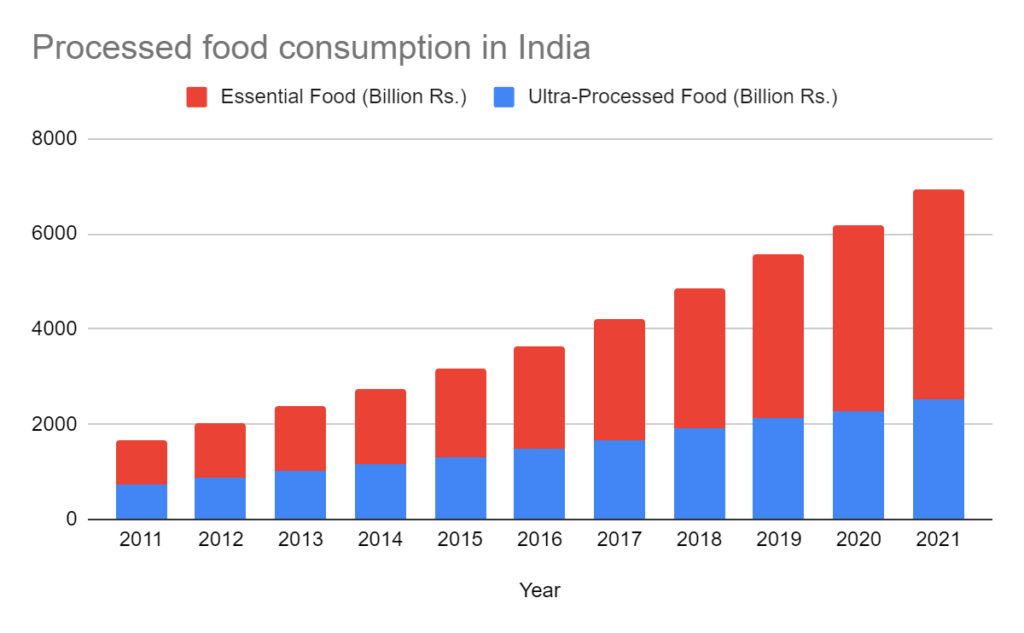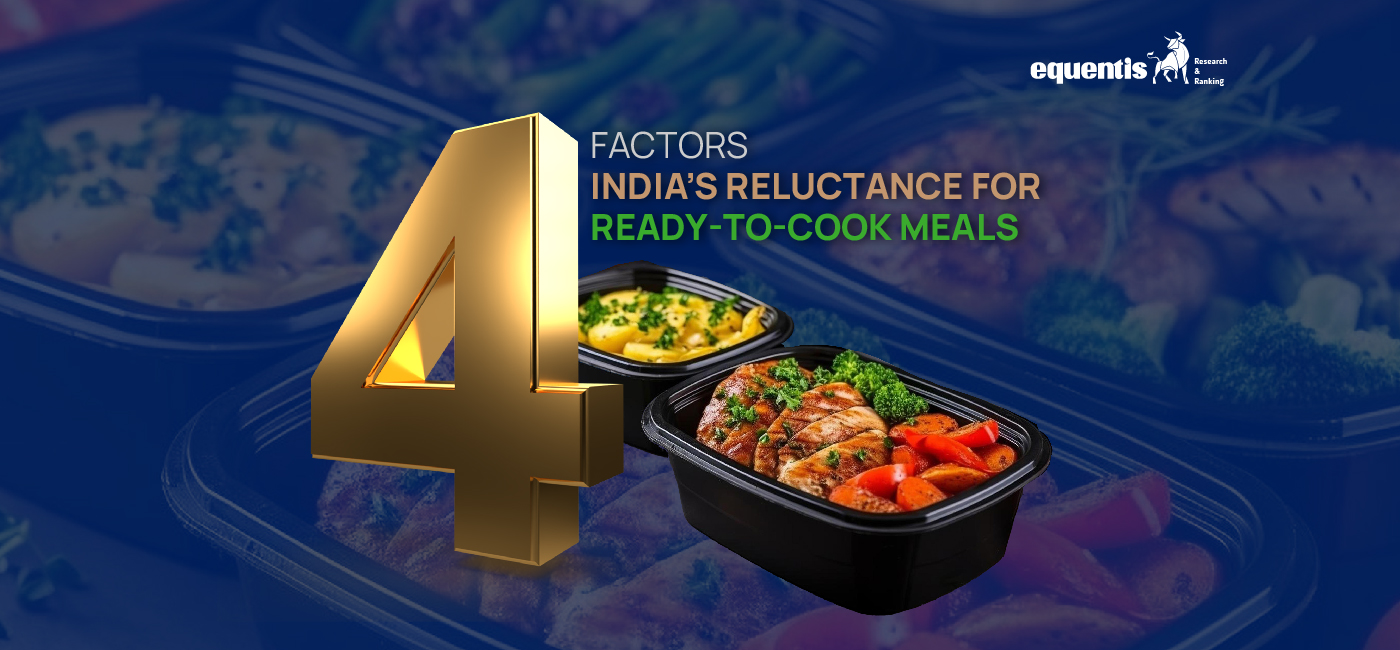In the bustling streets of India, where the aroma of spices fills the air and the clamor of busy markets is a symphony to the ears, food is not just sustenance; it’s a celebration. The Indian palate is complex and steeped in centuries-old traditions, yet it constantly evolves, adapting to modern life’s rhythms.
This blog post delves into the intricate relationship between the Indian consumer and the burgeoning ready-to-cook industry, exploring why, despite the convenience, these products have yet to replace the authentic taste of traditional Indian cuisine.
A Culinary Heritage Rich in Diversity
India’s culinary landscape is a testament to its cultural mosaic. With over 29 states and seven union territories, each region presents a culinary identity as distinct as its language and attire. In the North, you’ll find many rich, creamy curries, each with its history and blend of spices. Travel to the South, and you’ll encounter varieties of dosas, a testament to the region’s innovation with rice and lentils.
This diversity isn’t just about the thousands of flavors one can taste but extends to the centuries of culinary evolution, the methods of preparation, and the rituals that turn eating into a communal celebration. Despite their practicality, ready-to-cook meals often offer only a fraction of this diversity, with a limited range of around 50-100 different dishes available in the market, which pales in comparison to the authentic experience.
The Urban Shift: Processed Foods Gain Ground
Between 2011 and 2021, essential processed and ultra-processed food consumption increased by 315%. This shift, driven by the population living in cities and leading fast-paced lifestyles, doesn’t seem to translate into growth for the ready-to-cook sector.
Despite the convenience, it has been observed that people who spend some time cooking are not willing to trade the dining experience for time saved, which often amounts to a mere 5-10 minutes with ready-to-cook options. This can be seen in numbers, too, although Indians consume more processed food, 63.5% of its essential food. As technology advances, almost all essentials like milk and vegetables are processed for longer shelf life, making them much cheaper than their fresh counterparts.

Why Ready-to-Cook Isn’t Cutting the Mustard
In a country with over 1.3 billion people rapidly embracing modernity, ready-to-cook meals still struggle to find footing. The Indian consumer’s palate is discerning, and most of the preference is for traditional cooking methods.
The joy of cooking in India is sensory – the sizzle of spices in hot oil is a melody, and the aroma of freshly ground masalas is a nostalgia trip. These experiences are integral to Indian cooking, and a packet of pre-processed ingredients, which partially captures the authentic taste, cannot replicate them. Most Indian food is made using fresh ingredients, which are highly perishable. These ingredients can’t be added to the ready-to-cook mix, making the food lose out on its flavor.
The Health Factor: A Growing Concern
With the growth of the Indian middle class, there’s an increasing focus on health and nutrition. The scrutiny of processed foods’ nutritional value is intensifying. Urban Indians are skeptical about ready-to-cook meals. Often containing preservatives and lacking fresh ingredients, these meals are viewed with growing concern.
The health implications of a diet high in processed foods, which can lead to a higher risk of health issues, are well-documented. Consequently, many Indians invest an additional 15-30 minutes in cooking fresh meals over the dubious convenience of pre-packaged options.
Post covid, Indians have become more health-conscious and avoid ultra-processed foods, as seen in the graph above. Although ultra-processed foods have been selling well, demand is slowly shrinking compared to its essential counterparts.
The Future of Food in India
What does the future hold for India’s food industry? The ready-to-cook sector needs to innovate to capture the hearts (and stomachs) of Indian consumers. This might involve a closer mimicry of traditional flavors, an emphasis on health, or even a fusion of global cuisines with local tastes. One thing is sure: the Indian love affair with food is enduring, and any product that wishes to be a part of it must resonate with the cultural, health, and taste values that define this nation’s palate.
*Disclaimer Note: The securities quoted, if any, are for illustration only and are not recommendatory. This article is for education purposes only and shall not be considered as recommendation or investment advice by Research & Ranking. We will not be liable for any losses that may occur. Investment in securities market are subject to market risks. Read all the related documents carefully before investing. Registration granted by SEBI, membership of BASL, and certification from NISM in no way guarantee the performance of the intermediary or provide any assurance of returns to investors.
FAQs
Why is traditional Indian cuisine preferred over ready-to-cook meals?
Traditional Indian cuisine is deeply rooted in a rich culinary heritage that offers diverse flavors and cooking methods. The authentic taste, which comes from fresh ingredients and time-honored techniques, is something that ready-to-cook meals often fail to replicate.
How has the consumption of processed foods changed in urban India?
Between 2011 and 2021, the consumption of essential processed and ultra-processed foods increased by 315%. Despite this, the ready-to-cook sector hasn’t seen proportional growth, as many urban dwellers still prefer the dining experience over the marginal time saved with ready-to-cook options.
What are the health concerns associated with processed foods in India?
There is growing scrutiny over the nutritional value of processed foods, as they often contain preservatives and lack fresh ingredients. Many Indians are becoming more health-conscious, especially post-COVID-19, and spend extra time cooking fresh meals to avoid the health risks associated with processed foods.
What does the future look like for the ready-to-cook industry in India?
The ready-to-cook industry needs to innovate to appeal to the Indian consumer. This could involve creating products that closely mimic traditional flavors, focusing on health benefits, or incorporating global cuisines with local tastes.
Why aren’t ready-to-cook meals gaining popularity in India despite the convenience?
The sensory experience of cooking—such as the sizzle of spices and the aroma of freshly ground masalas—is highly valued in India. Ready-to-cook meals often only partially capture the authentic taste and cannot offer the same experience. Additionally, most Indian dishes use fresh, perishable ingredients unsuitable for ready-to-cook mixes.
How useful was this post?
Click on a star to rate it!
Average rating 0 / 5. Vote count: 0
No votes so far! Be the first to rate this post.
I’m Archana R. Chettiar, an experienced content creator with
an affinity for writing on personal finance and other financial content. I
love to write on equity investing, retirement, managing money, and more.
-
Archana Chettiarhttps://www.equentis.com/blog/author/archana/
-
Archana Chettiarhttps://www.equentis.com/blog/author/archana/
-
Archana Chettiarhttps://www.equentis.com/blog/author/archana/
-
Archana Chettiarhttps://www.equentis.com/blog/author/archana/

